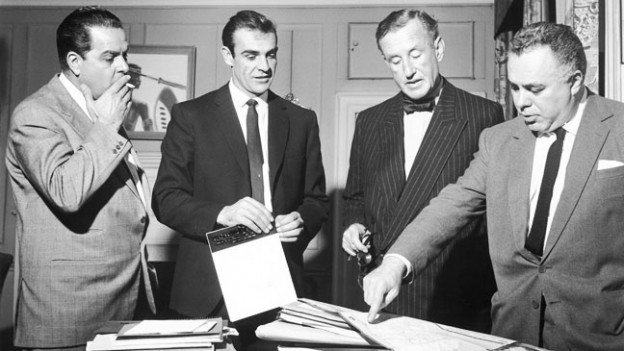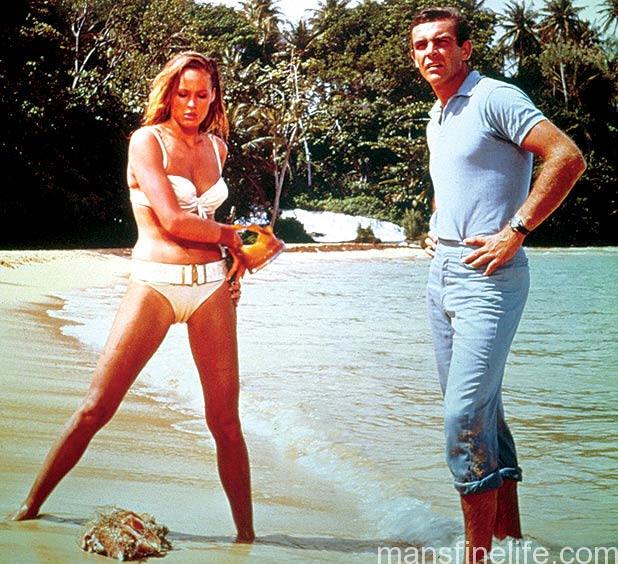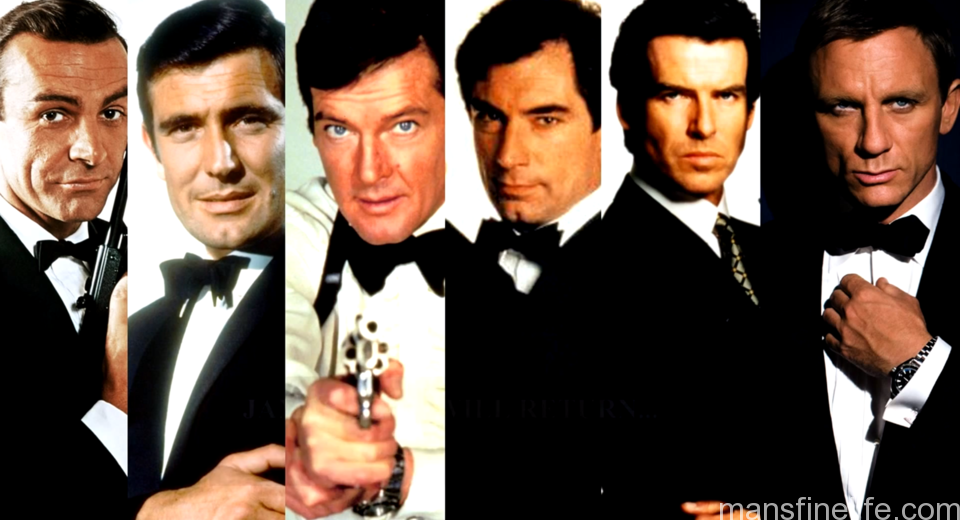Everybody has a favorite James Bond movie and a favorite actor who played the legendary British secret agent. But today relatively few have ever read Ian Fleming’s original books. Fewer still know the story of the men behind the myth and their herculean efforts to get Bond to the screen and keep him on top throughout the decades. 2013’s superlative documentary Everything or Nothing: The Untold Story of 007 brilliantly fills in the blank spaces and inside history for both the casual 007 enthusiast and the hardcore fanatic.
https://www.youtube.com/watch?v=MuFj3-Z_SbM
With unprecedented and officially sanctioned access to the key players in Bond’s creation and remarkably enduring success as a cinematic staple for generations, Everything or Nothing delves into Fleming’s biography to show how his conception of James Bond was forged by his work as an intelligence officer for the British Navy during WWII. A cunning planner of sabotage operations, Fleming was nonetheless primarily a desk man who had to live the action vicariously through the exploits of the men “playing Red Indians”, his colorful term for Special Forces commandos operating behind enemy lines. After the war and with a new Soviet enemy to face, Fleming kicked around a bit before finally finding his calling with the first Bond novel, Casino Royale, in 1953. Wonderfully informed with details from his wartime espionage experience if somewhat crudely written in a potboiler style, Casino Royale struck a cord and was an immediate success. This enabled Fleming to devote his energies to writing new adventures for his super spy to please an enthusiastic public if not always the hot-and-cold critics. Between 1952 and his death in 1964, Fleming cranked out twelve full-length Bond novels and two collections of 007 short stories.
James Bond’s exploits were inherently cinematic and almost immediately various film and television producers approached Fleming with ideas for adaptations, with very mixed results initially. The short story collection For Your Eyes Only began as concepts for a planned TV series that never materialized and Casino Royale was initially optioned to American television for a short, highly bastardized version featuring American agent “Jimmy” Bond (!). Thunderball had its origins in a screenplay collaboration between Fleming, Kevin McClory and couple of others, which led to a lot of problems down the road regarding rights and ownership and begat 1983’s “unofficial” Bond movie Never Say Never Again, with Connery returning in middle age almost out of spite. But when Albert “Cubby” Broccoli became obsessed with Bond and teamed with Harry Saltzman, who had shrewdly obtained the film rights to Fleming’s books past and future, James Bond was ready for his proper launch as a new kind of movie hero for the Cold War generation. The duo formed EON Productions, an acronym for Everything or Nothing, which they felt were the only two possible results of their go-for-broke bet on Bond. After an exhaustive talent search they made the brilliant decision to hire up-and-coming Scottish actor Sean Connery to portray 007. When the debut film Dr. No was released late in 1962, the combination of the wry, slightly cruel and utterly dashing Connery, the remarkably beautiful, bikini-clad Ursula Andress, the evil Dr. No dealing death from his secret island fortress and Monty Norman’s pitch perfect theme music proved catnip to the worldwide public. The most successful franchise in film history had been born.
Everything or Nothing recounts the behind-the-scenes tales of Fleming’s triumphs, difficulties and rather sad early death from heart disease; the ups and downs of the dynamic duo of Saltzman and Broccoli and their families; and the arc of the series as a whole as it navigates the rapidly changing tastes of the filmgoing public throughout the years. It’s filled with fascinating first person anecdotes from those who directed and designed the movies and the stars who acted in them. Most interesting of all is the candid talk from the Bond actors, a club with a smaller membership than astronauts who have walked on the moon, as Pierce Brosnan proudly notes.
With the notable exception of Connery, whose reflections we hear only via archival material, the other Bonds are interviewed and are unanimous in their appraisal of 007 as a singularly important role in their lives, for good and sometimes for ill. Some of the actors eagerly embrace what James Bond means to the world at large and are proud of their ability to put their own unique stamp on the role. Roger Moore was perfect casting for his era and chose to play a more suave, rather ironic and less rough-edged spy even as the series careened towards self-parody later in the 70s. Pierce Brosnan got a second bite of the apple after conflicts with Remington Steele kept him from accepting the part initially; when he finally laded it he played the role with gusto and pure joy at being Bond. On the other hand, some of the actors had a more ambivalent relationship with the character, like George Lazenby, a rookie actor who succeeded Connery but inexplicably quit after one great film, and Timothy Dalton, whose brooding, taciturn, downbeat Bond was too far ahead of its time for the audiences of the late 80s. The latest actor to carry Bond’s Walther PPK, Daniel Craig, was savagely received when his casting was announced — “A Blond Bond???” — but, with a nod to Dalton’s darker shadings and a return to emphasis on physical action over special effects and gadgetry, has been embraced in a post 9/11 world as a realistically jaundiced killer if not quite recognizable as Fleming’s original, very patriotic creation.




